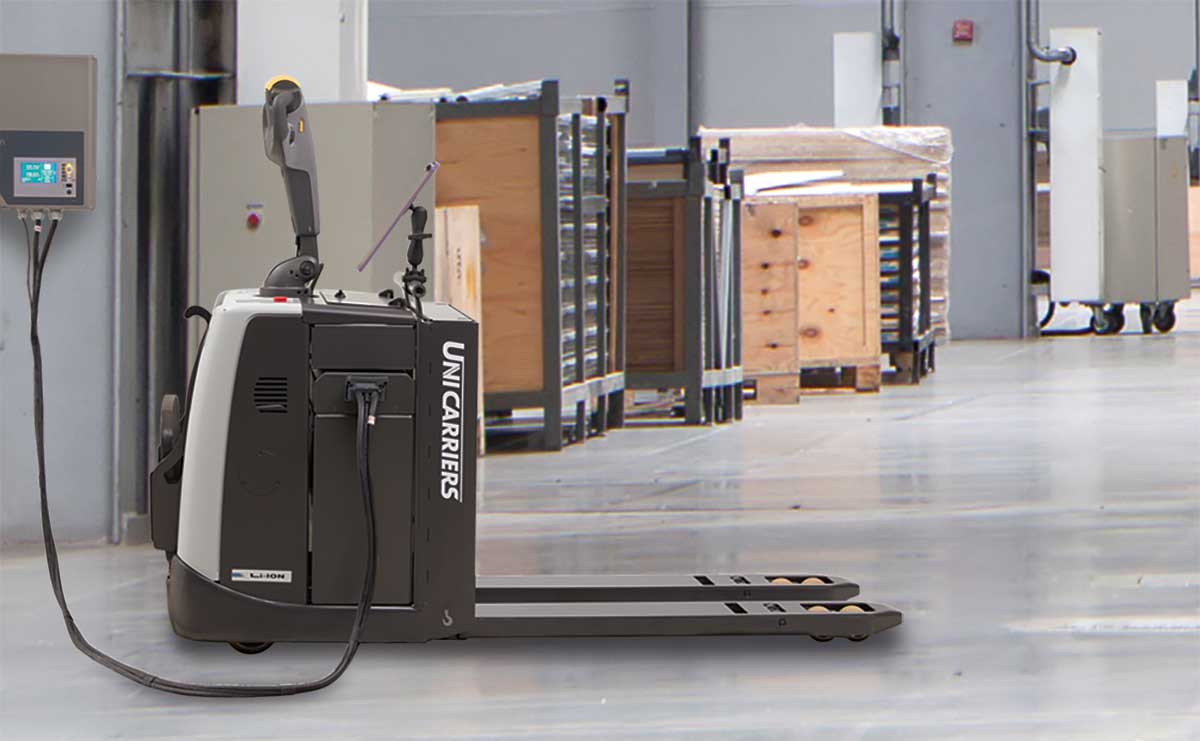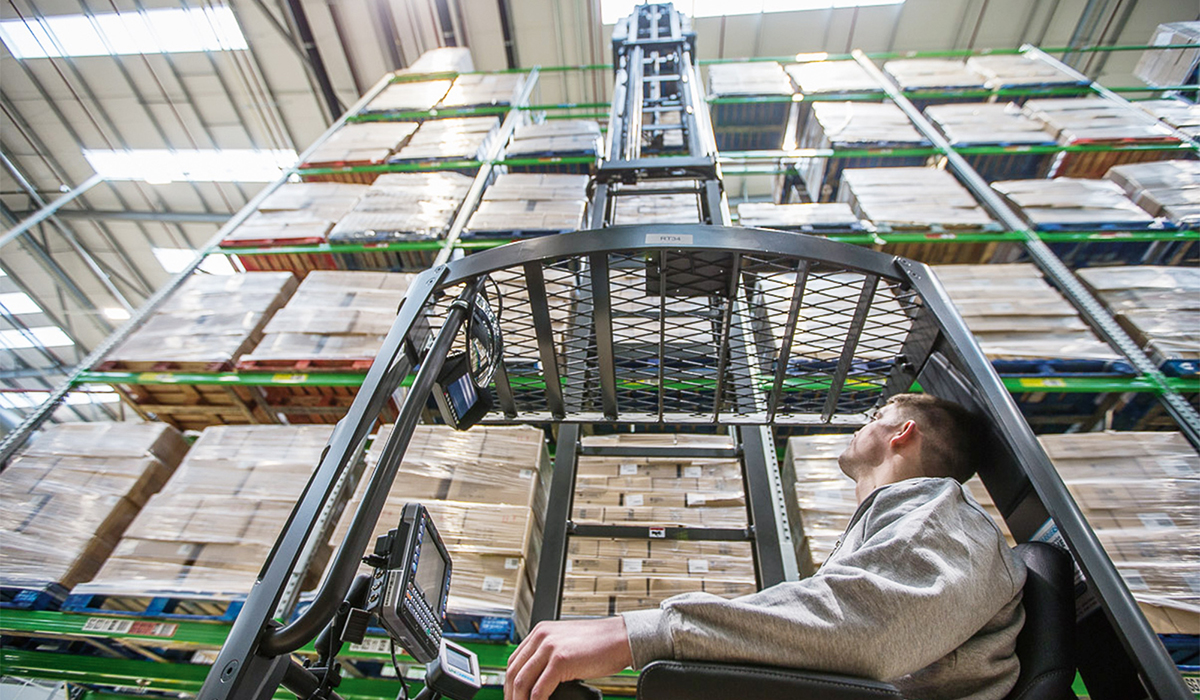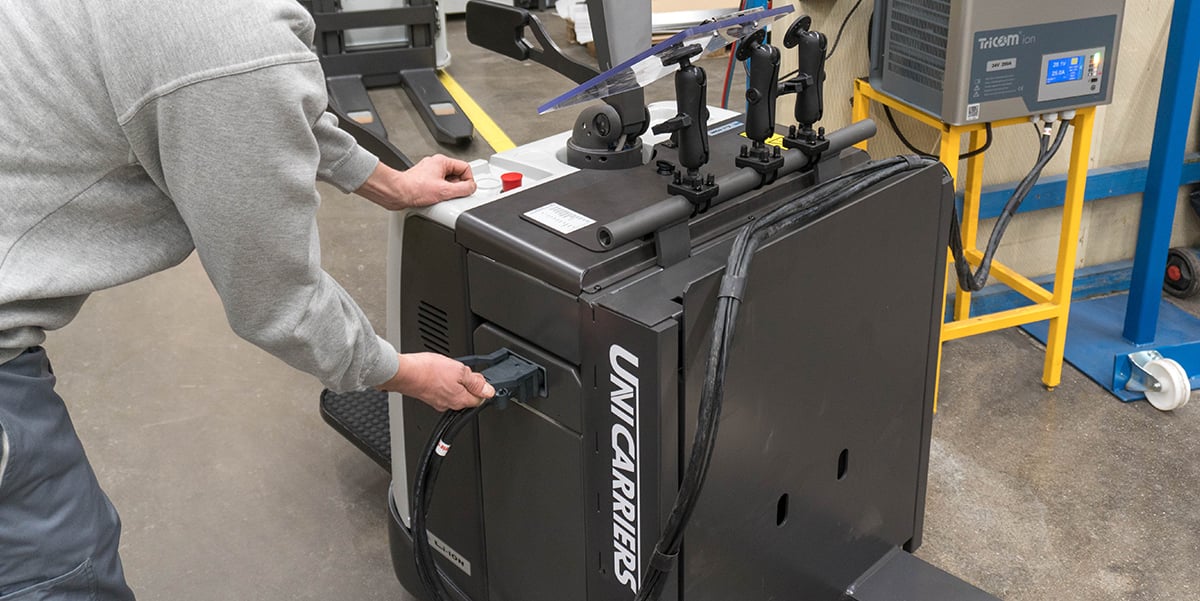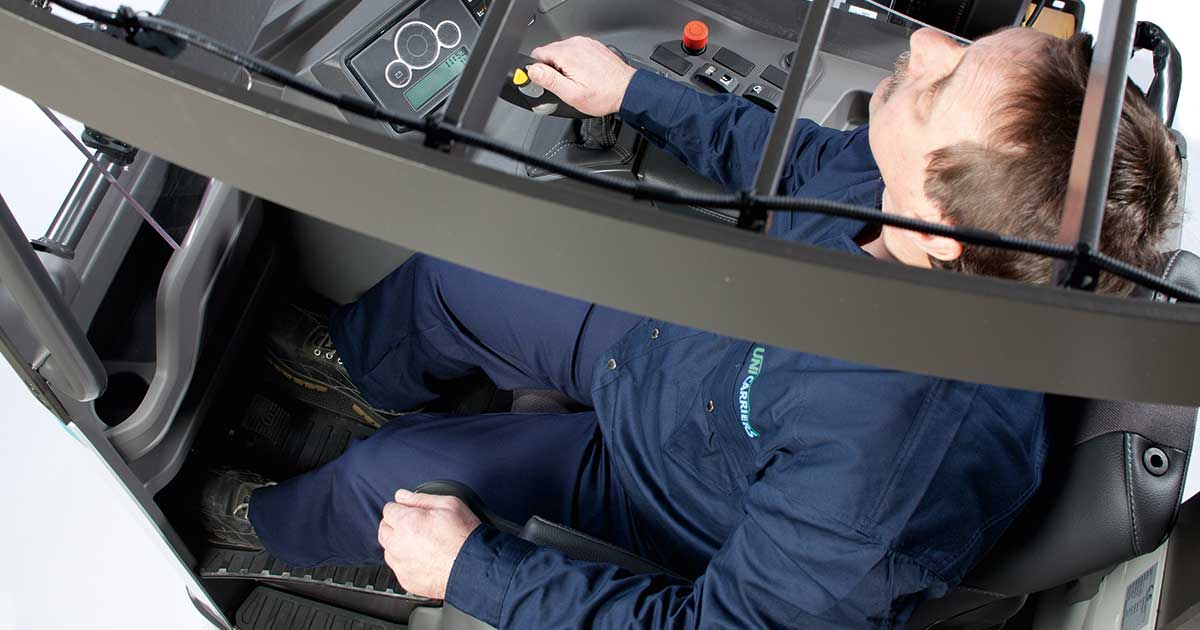Battery changeover is a necessary pain for most operations that use electric trucks. Changing the battery involves removing the forklift from its ordinary operation and taking it to a purpose-built battery changeover area or a larger battery room. Here, the extremely heavy spent battery must be removed and connected to the charger, and a new battery removed from the charger and connected to the truck.
Special equipment is required to make the battery change possible, like a battery roller that can push the new battery into the compartment while pushing the old one out, or a specially-adapted pallet truck with an attachment designed for handling batteries. On top of all this, lead-acid batteries require regular fluid top-ups, cleaning and maintenance to work effectively and safely, and ventilation systems are essential to stop the build-up of explosive hydrogen gas produced during charging.
With all of these factors to consider, it's unsurprising that Li-ION batteries are becoming a popular energy solution for forklifts.












































